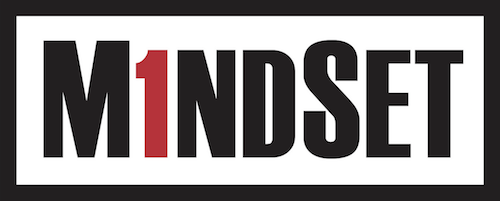An acquaintance recently came to me on the pretext of asking for advice. After a description of what can be boiled down to an unhealthy work culture, she finally paused to ask, “So, Kim, what would you do?” Feeling flattered that she saw me as a fountain of wisdom, I proceeded to offer her a brilliant series of three ideas – to which she responded with something between disinterest and disappointment.
Having ignored what the great psychologist Theodore Roosevelt said, “No one cares how much you know, until they know how much you care,” my ego had led me to make the mistake of believing that she had actually approached me for advice. Had I been more observant and focused on (or inquired about!) how she was feeling rather than on what she was saying, I would have recognized that she was seeking empathy, not instruction.
I did eventually recover, spending the next 20 minutes actively listening and allowing her to express her frustration in detail. It was only then that she seemed to have a renewed interest in any thoughts or suggestions that I might be willing to share. I was pleased when she became enthused about a couple of my ideas, yet I could tell there was still some hesitancy. When I asked what hurdles might stop her from implementing the ideas, she replied, “Well, my boss is a real bottom-line type of guy. I suspect he is going to ask me how we are going to measure and document the impact of any such ideas.”
I hear this question so often that it should no longer surprise or exasperate me – but it still does. I have no aversion to measurement, in fact I actually enjoy both statistics and psychometrics – a slight character flaw. No, my concern stems from how few people understand the complexity of trying to collect worthwhile measures in the natural world.
I often see organizations using assessment instruments that are woefully short on reliability, validity, or both. (Here is a quick quiz to see if someone has a cursory understanding of these important constructs: Can a measure be reliable if not valid? Can any measure be valid if not reliable? One of those two is possible – one is not. Feel free to ponder for a bit – I will give you the answer in just a bit.)*
Sometimes motivated by a desire to cover their own behinds using the guise of numbers-based, methodological objectivity, these prove-it-with-a-graph executives seem oblivious to the fact that superior leaders often rely on heavy doses of theory and common sense when making decisions – particularly when it comes to work culture and employee practices. The daunting challenge of, “And just how are we going to measure the impact of this idea?” can be used (often by those having few intuitive leadership bones in their body) to prevent the implementation of new and better leadership practices.
Many of us are overly impressed with numbers, seemingly thinking that if we measure and reduce something to a number, we have precision! Ahh, but such is not the case – there exist many lousy measures that lack reliability and/or validity, i.e., measures that purport to consistently measure what they do not.
Apropos is the brilliantly insightful comment first made in 1914 by Professor A.J. Smith. He was telling a group of new graduate students that they would get only one great benefit from a good education: the ability to tell when another man is talking rot. Our world is increasingly filled with rot – and some of it comes from those who advance the notion that you must reduce something to a number to prove it so.
Some powerful theoretical insights reach axiomatic status because they are known to be true. Great leaders embrace these MindSets – and they do NOT need to conjure up some feeble measure to prove that they make a vital contribution to the health of their enterprise. Examples? Having supervisors who genuinely care about the growth and success of employees, effective decision making processes, ensuring great team chemistry, holding employees to high standards, fostering the relentless pursuit of excellence, infusing the acceptance of change into the bloodstream of the culture, effective conflict management, compensation programs that motivate, and creating a greater sense of pride and ownership among employees are just a few.
Measurement is useful only when it can be done well; measurement is a drain and a waste of time and energy when it can’t be done well. As we move from the laboratory of the physical sciences to the real world of the social sciences, the challenge of accurate measurement becomes exponentially more complex. In fact, some have derisively suggested the term “social science” to be an oxymoron. I would not go that far, but it is certainly true that the social sciences are several steps behind the natural sciences with respect to scientific and measurement rigor.
Even the granddaddy of sciences – physics – has come to understand that once they venture far from the controlled environment of the laboratory, prediction and any valid notion of causation often becomes nigh impossible. Oh, initial causative factors may be known, but how those causative factors will evolve, interact with a myriad of other factors, and then ultimately impact the larger ecosystem is beyond our ability to determine – thus they have developed what is known as chaos theory. A related concept is termed the butterfly effect, meaning huge impacts can result from very small inputs into the system, e.g., a hurricane developing in North America as a result of a butterfly flapping its wings in Africa.
Of what relevance is this to my friend’s boss who wants to know how he is going to measure the impact before he is going to adopt practices that claim to offer employees the opportunity to work in a more growth oriented and positive environment? Well, the immensely complex world of the work environment does not allow us to validly measure the impact of our minute-to-minute interactions on the people with whom we work. Yet both common sense and psychological theory emphasize the importance of leadership practices, style, and behaviors. With respect to work culture, the butterfly effect is very much in play: even small adjustments to a leader’s style or a team’s dynamics can reap large benefits to both their colleagues and company. Leaders should be encouraged to focus less on securing pseudo-scientific measures and more on assuring the right leadership practices into their system.
*Quiz answer: It is impossible for a measure to be valid if it is not reliable. It is quite easy, however, for a measure to be completely reliable and still lack validity. An example of the latter would be to take a room full of 20 students and measure their foot speed by weighing them. If we weighed them five times in a row, we would get the same ranking as scales tend to be highly reliable. Yet although our measure is completely reliable, it would not do a good job of predicting foot speed; thus reliable but not valid.

Founder of MindSet, LLC.

